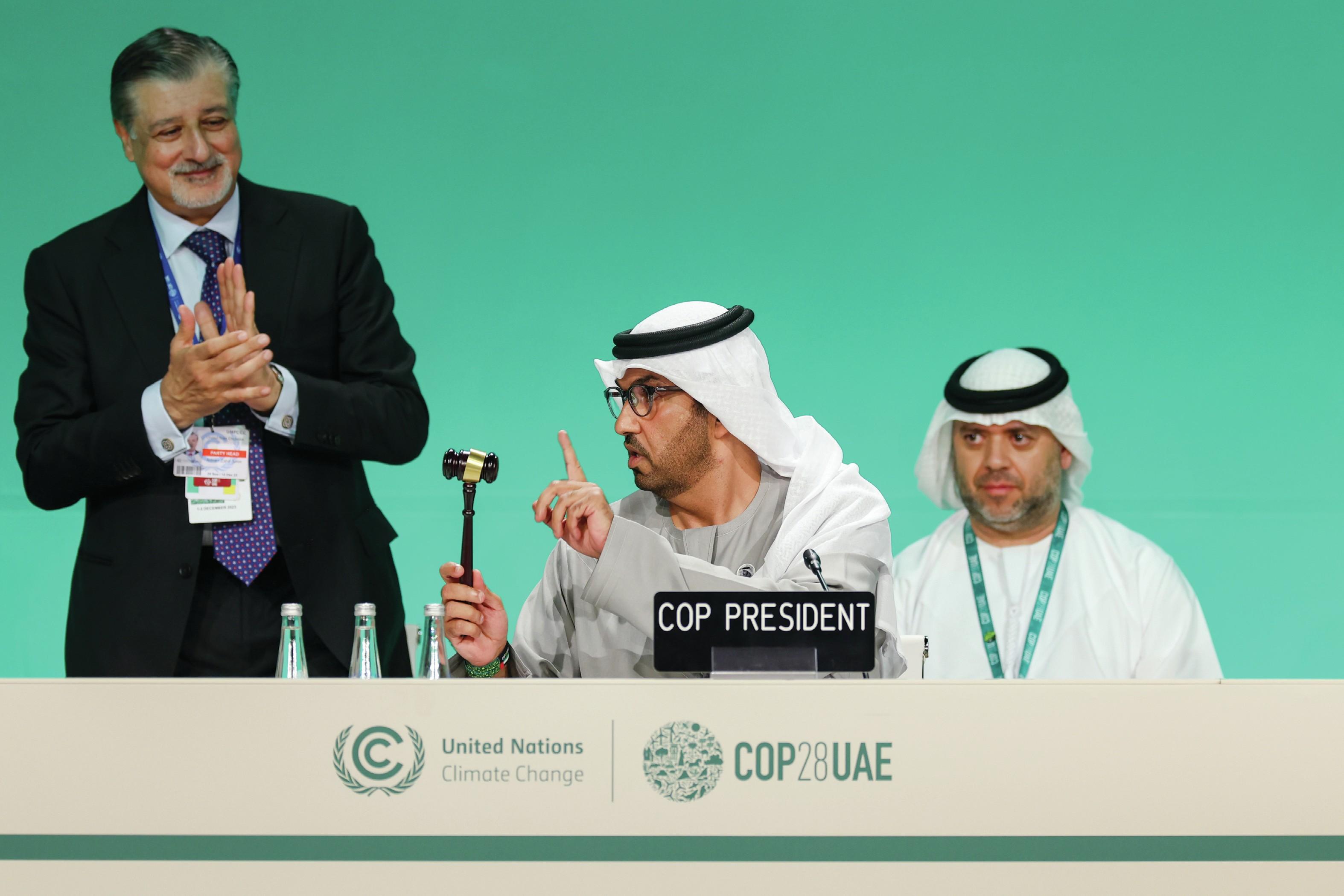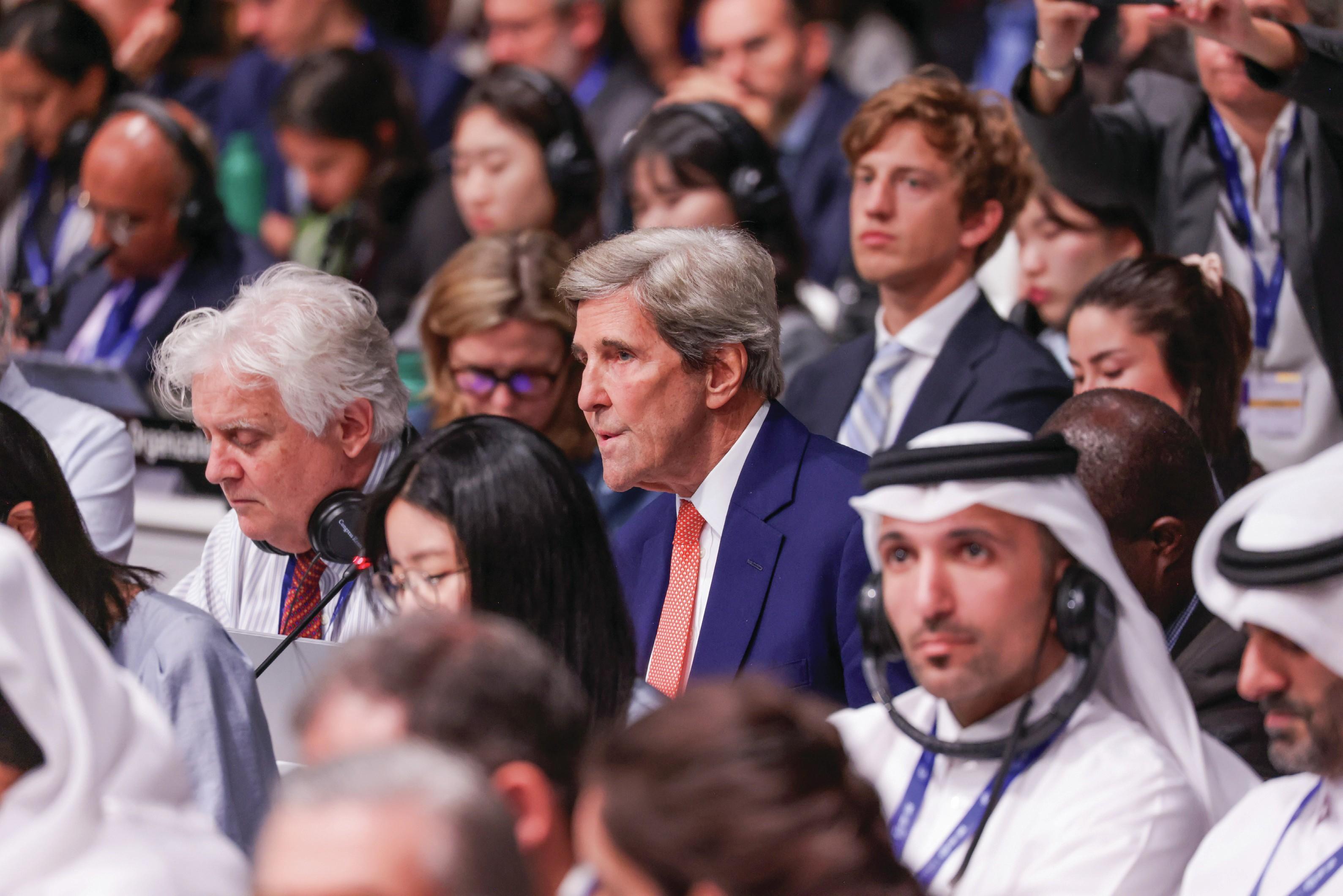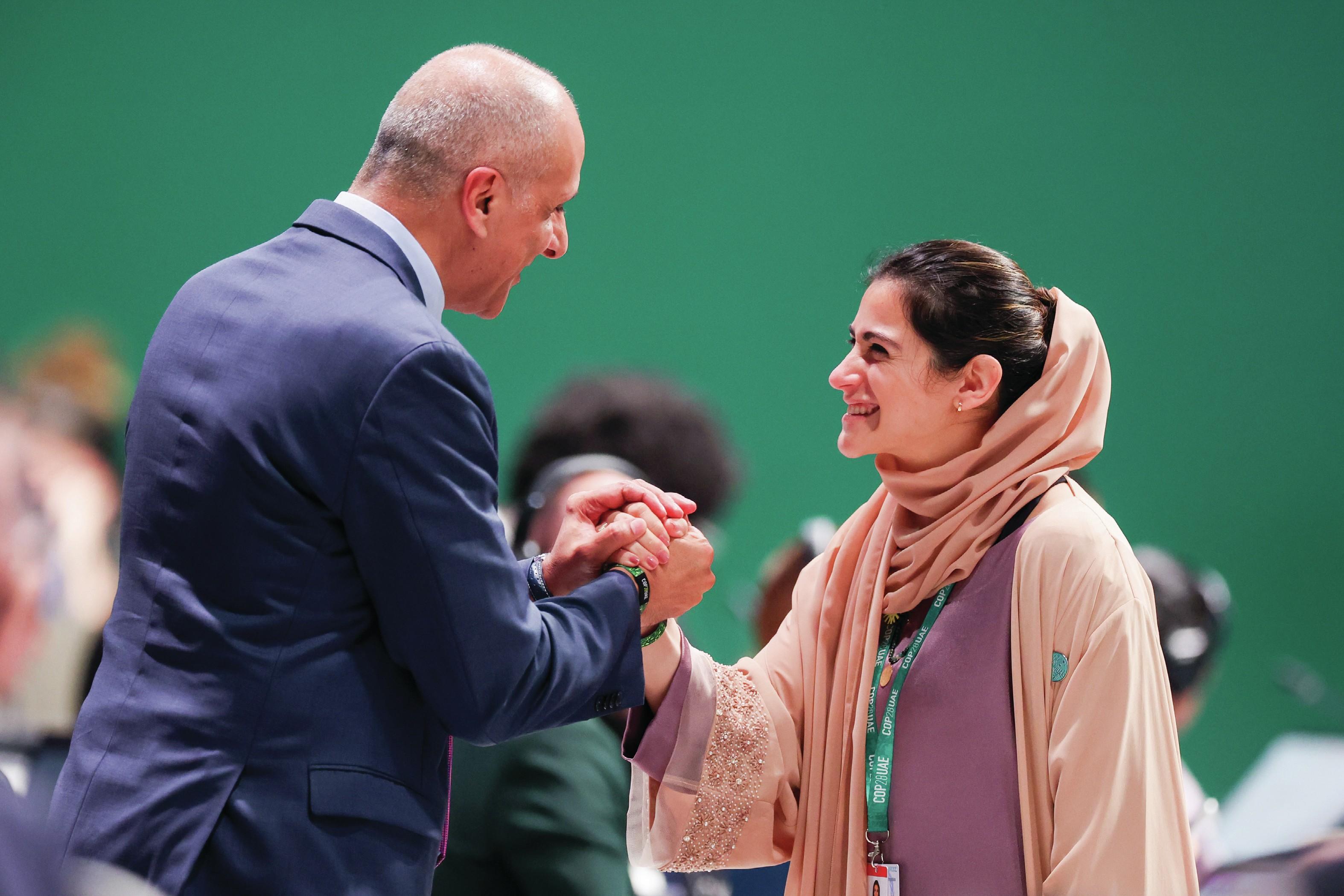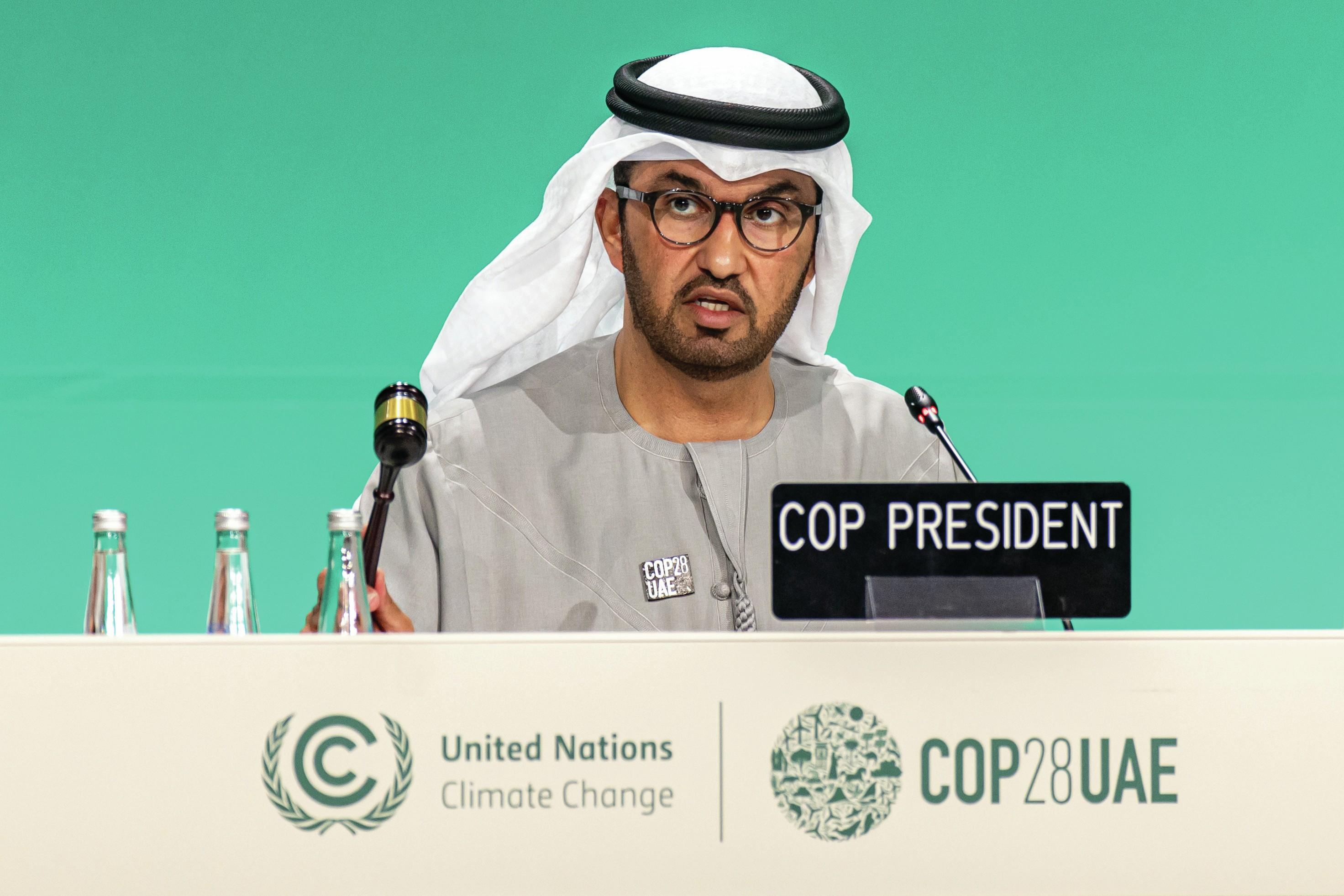This website uses cookies so that we can provide you with the best user experience possible. Cookie information is stored in your browser and performs functions such as recognising you when you return to our website and helping our team to understand which sections of the website you find most interesting and useful.
Earth Song: What COP 28 taught us about winemaking in a warming climate
The latest UN Climate Conference of Parties (COP 28), held in Dubai, urged us to get serious on agriculture and land use emissions, reports Nick Breeze.

COP 28 drew to an inglorious close on 12 December, with the final agreement on fossil fuels falling far short of the 1.5ºC limit for what scientists have stated is the upper end of “safe” global warming.
Above 1.5ºC, experts are extremely concerned that tipping-points will be crossed, causing irreversible loss of biodiversity and disruption to critical Earth systems, as well as impacting food security and loss of life in many communities around the world.
Professor Dr Johan Rockström is director of the Potsdam Institute for Climate Impact Research, a leading climate research institution. Speaking at COP 28, he said: “It is really important to recognise that climate change and biodiversity loss is at such a global scale that we are now destabilising the global hydrological cycle. We are pushing it out of balance, and the latest estimates show that every 1ºC of global warming adds another 7% of moisture in the atmosphere.”
As a lead author on The Global Commission on the Economics of Water report, Rockström said that the water issue “integrates across the whole economy in a way that we have completely underestimated, because not only is it in all the goods and services, it is also interconnecting nations”.
This interconnection is linked through atmospheric rivers and through provisioning of rainfall. Rockström continued: “Argentina is entirely dependent on a stable Amazon rainforest, because it provides up to 40% of the downwind rainfall. China is entirely dependent on a stable rainforest in Kazakhstan, and so on.”
Rockström went on to explain that we are adding an increasing amount of energy to the global hydrological cycle, guaranteeing an increase in climate extremes. We are currently estimated to be between 1.2ºC and 1.5ºC global warming above the preindustrial mean global average.
As Rockström says: “Suddenly, in temperate regions of the world, you get tropical downpours of 100mm rainfall, flooding in regions of Germany that have never been recorded before, and deep droughts in other parts of the world, because you just get a rising fluctuation of extremes in water supply.”
At The Wine Rendez-Vous tasting in Paris in November, Pierre-Jérôme Beretti, European account manager at La Compagnie Burgondie, a group of seven cooperative wineries, with four in Burgundy and three in Beaujolais, spoke of the challenges of recent harvests.
The group produces up to 20 million bottles of wine per year, with several million of those shipped to the UK. Beretti explains that demand has been increasing in the UK but, due to the “difficult” smaller vintages of 2019, 2020 and 2021, when 70% of the crop was lost, the business has struggled to meet that demand.
Beretti says: “Between the hail, the drought and now the late frost we faced, the Chardonnay mostly, as well as other grape varieties, is impacted.” The company estimates that, on average, it will see a decadal yield drop of 5%–10%.
This was echoed at the same tasting by Sébastien Le Querec, export sales director at the Union de Producteurs de Saint-Emilion (UDP), who said that 2017 was the year when climate change began to severely impact production.
In 2018, producers lost 20% of their crop to mildew, while in 2019 they lost 15%. Over the last five years, says Le Querec, they have lost two full years of production, equal to 8m bottles.

In the opening days of COP 28 in Dubai, in a flurry of announcements that aimed to set a pace for high achievement, the COP 28 UAE Declaration on Sustainable Agriculture, Resilient Food Systems and Climate Action was announced by the COP presidency. At the time of writing, 152 countries have signed up to it.
KEY AREAS OF CONCERN
The UAE Declaration is a five-page document that outlines key areas of concern for global emissions and food security.
Currently, global agriculture and land use account for an estimated 30% of emissions. This is enormously significant in the global challenge to hold temperatures down below 1.5ºC. However, in many areas, it is not the emissions that are the problem, but the resilience of food systems as the climate destabilises and extreme impacts are causing a drop in production.
Edward Davey, head of the World Resources Institute in the UK, told db that of the nations that have signed up to the UAE Declaration: “If they are operating on a good government bureaucracy, [they] would have gone through a process to assess what is involved, taking it to the top of government for final sign-off.’
In the 18-month period following COP 28, each nation has an opportunity to incorporate food systems and land use in a more significant way into their nationally determined contributions (NDC) to reduce greenhouse gas emissions, in line with carbon budgets under the Paris Agreement.
As each country deliberates how to address agriculture and land use in its own NDC, they will also be looking at their national adaptation plan and their national biodiversity plan.
As Indian climate expert Dr Arunabha Ghosh says: “We have to have a pivot in 2023 to a common conversation across climate, land degradation and biodiversity.”

For this to be achieved, the framework of the declaration needs to be interpreted at the regional level, where most of the action takes place. This is where local leaders can have a big impact and, in terms of the declaration and with local regional actors, there has been a lot of discussion around soil health and regenerative practices, both for locking up carbon and increasing resilience to climate disasters.
The framework itself is not overly prescriptive in terms of actions to be taken, because each region will have its own defined challenges that it is addressing. For example, for one group of countries, the emphasis will be on mitigation and, for others more vulnerable to climate extremes, it will be on adaptation and resilience.
Alentejo in southern Portugal is one region that is experiencing the worst of droughts and subsequent flooding.
My first-hand experience working with the Wines of Alentejo Sustainability Programme (WASP) demonstrated that the action they are taking is not to please any UN declaration – but is simply to survive.
WASP manager João Barroso highlights the stresses that producers have seen just this year, saying: “It has been an agricultural horror movie. At this time of year, the vineyards should be in a vegetative rest period. Yet this year, and in the last few years, producers are seeing the vines start to bloom because the plants are confused by the abnormally warm weather.”
He continues: “Extreme heatwaves have been hitting the country. The Alentejo region has had four to five heatwaves across the whole of the region in the last three years. They start in April and last until October/November.”
On top of this, the region has experienced torrential downpours, causing historic flooding both in urban areas and in the interior agricultural region. In terms of viticulture, the loss of yield at the harvest time has been mixed. Some estates in more drought-prone areas are definitely getting hit harder by the hot, dry summers, with windburn further adding to their woes.

However, others who have developed successful regenerative practices actually managed to increase their production by 15%–20%. Barroso says that increased yields, despite intense summer drought, have become a regular feature of wine estates who are working with WASP. He attributes this enhanced resilience to regenerative practices that help soil to retain moisture and microbial life to thrive, benefitting vines.
ENHANCED RESILIENCE
In the UK, Davey says that the Government is “getting close to looking at diets in relation to land use, even if they are reluctant to set stringent guidelines around diet because it is such a political issue”.
Arriving at COP 28, I met Jack Curtis from Carbon Jacked, a UK company that helps businesses and individuals to measure and reduce their carbon emissions. Curtis cited one of his clients, Rathfinny Wine Estate, which farms a large estate in Sussex.
As part of a suite of measures to increase biodiversity and reduce emissions, the team at Rathfinny has introduced corridors of biodiversity and is moving away from livestock in order to rewild the land.
Jack emphasises the efforts that Rathfinny’s team has made in engaging consumers in the story of change with regard to meat consumption. He says: “When we first measured their carbon footprint, they were quite surprised by the extent of the carbon footprint caused by the meat. They have done their best to source it sustainably, but the really big thing here is about the land use change and the methane emissions from livestock.”
Carbon Jacked worked with Rathfinny to look at alternatives, and decided to shift the focus from red meat to game meat, such as venison, as well as starting to introduce vegan options on the menu. This transformation has reportedly landed well with consumers, and shows how producers can show leadership in areas that benefit the environment, and communicate to their customers their awareness of wider environmental issues.

Davey agrees that the Emirates declaration should be seen as a signal of the changes that we want to see developing throughout the rest of this decade. Businesses that are responding to challenges now are getting ahead of the curve and sharing their progress with customers, while informing them as to why they are making these changes and inviting them to join them on the journey.
Davey says: “We all have a role here. Political leaders often don’t act because citizens don’t ask them to, or because farmers don’t say they want them to act in a certain way. We need an all-of-society movement for change to deliver on the declaration. This kind of movement is an international movement, but fundamentally it is a movement within national borders.’
During COP 28, I had a video call with Sven Bruchfeld, winemaker at Polkura in Chile’s Colchagua Valley. As he walked among the vines, he described the persistent drought conditions that he was working against. Polkura has started to dry-farm, using careful manipulations of the plant roots, while creating corridors of biodiversity in the form of hedgerows, and protecting the soils by planting cover crops.
The drought was not proving to be too great a problem, and Bruchfeld says that, even if the new reservoir means Polkura has greater access to water, the producer will not use it for viticulture, even if there is a chance it could improve the wine. In this way, Bruchfeld is acknowledging the preciousness of the resource and the need to rethink our relationship with it.
The UAE Declaration can be seen as a framework for care, in much the same way that we reserve seats on a bus for the elderly. It is a clear signal that, contrary to the failed outcome of COP 28 with regard to fossil fuels, society does care.
Nick Breeze is the author of COPOUT: How governments have failed the people on climate. Due to be published by Ad Lib on 14 March 2024, it is available to pre-order now via Amazon and bookshops.

